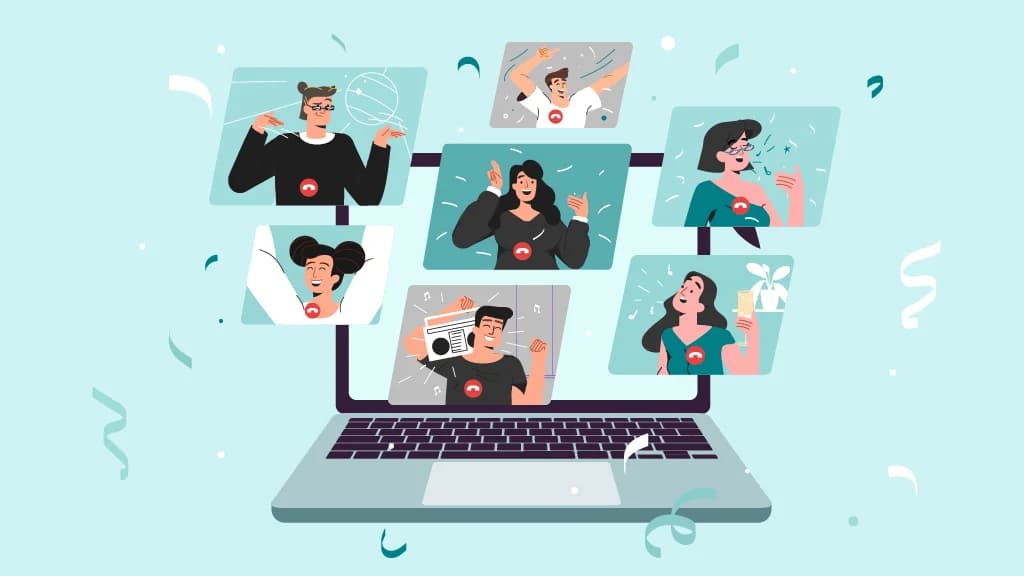7 Ways to Gamify Loyalty Programs Beyond Points: Achievement Badges, Streaks & Social Competitions

Team AdvantageClub.ai
November 10, 2025

They’re not just digital features; they’re tools that turn recognition into pride. Understanding how AI employee reward systems work helps organizations design recognition experiences that are consistent, transparent, and emotionally rewarding.
1. Move from Transactions to Emotional Engagement
Why traditional programs fall short:
- Points capture behavior but not emotion.
- Generic rewards overlook personal motivations.
- Hybrid or remote teams don't always feel equally recognized.
A better approach:
Use gamified frameworks that combine intrinsic motivation, storytelling, and personalization. Every conversation becomes meaningful rather than robotic when acknowledgment is sincere and emotionally fulfilling.
2. Tap into the Science of Motivation Through Gamification
Instead of adding “more points,” focus on experiences that make the journey itself rewarding. Each badge, streak, or social competition adds energy and excitement to everyday participation. That’s the power of employee engagement gamification, it transforms simple recognition into interactive employee recognition games that sustain motivation and belonging.
Three elements that drive motivation:
- Achievement Badges: Visible symbols of milestones that connect to personal and team goals.
- Streaks: Encourage consistency and self-improvement by celebrating progress over time.
- Social Competitions: Create connections through friendly, inclusive rivalry.
Outcome:
Recognition becomes human-centered. It fuels belonging, pride, and purpose rather than just reward redemption.
3. Design Achievement Badges That Tell a Story
Examples of meaningful badges:
- Innovator – for creative problem-solving.
- Team Catalyst – for mentorship and collaboration.
- Culture Contributor – for empathy and inclusivity.
- Remote Ally – for supporting distributed teammates.
Pro Tip:
Link each badge to a clear behavior or value so everyone understands what it represents.
Outcome:
Badges transform recognition into a shared story of growth, reinforcing loyalty, pride, and alignment with organizational culture.
4. Use Streaks and Progress Trackers to Build Habits
Streaks encourage consistency, while points reward one-time behavior. Because of this, streak mechanics have become a core element of AI-powered loyalty program gamification. They create momentum and provide the impression that engagement is a continuous victory.
Ideas to implement streak-based recognition:
- Kudos Streak – for consistent peer-to-peer appreciation.
- Wellness Commitment – for steady participation in health or wellness programs.
- Innovation Pulse – for regular creative contributions or idea-sharing.
Pro Insight:
Use digital dashboards to track streaks in real time. Visibility keeps the excitement alive and naturally reinforces progress.
Outcome:
Streaks turn good habits into lasting engagement and engagement into loyalty that endures.
5. Make Recognition Social: Build Community Through Competition
Inclusive competition ideas:
- Appreciation Challenges – teams compete to send the most thoughtful kudos.
- Creativity League – departments showcase innovative ideas.
- Empathy Leaderboards – spotlight acts of kindness and collaboration.
Why it works:
Healthy competition encourages involvement and a sense of community. The goal is to inspire one another, not to exceed one another. Through social competition at work and thoughtfully crafted achievement badges, employees feel seen, valued, and connected to something bigger than themselves.
6. Design Gamified Experiences for Inclusion and Neurodiversity
Regardless of background or cognitive type, inclusive gamification guarantees that everyone can engage meaningfully and comfortably. Understanding the principles of recognizing neurodivergent employees effectively can help HR teams design gamified experiences that are both inclusive and psychologically safe.
Best practices for inclusive design:
- Offer different participation options: opt-in, private, or anonymous.
- Recognize effort, intent, and collaboration, not just output.
- Create badges that celebrate empathy, inclusion, and cultural contribution.
- Design experiences that are accessible, calm, and human-centered.
Outcome:
A loyalty program that’s equitable, safe, and engaging for everyone because real recognition honors every kind of mind.
7. Lead the Shift from Points to Purpose
How HR and program leaders can lead the shift:
- Align gamified activities with organizational goals and values.
- Track recognition equity to ensure fairness across hybrid and global teams.
- Use analytics to understand what truly drives participation.
- Encourage leaders to celebrate through storytelling, not just metrics.
- Use platforms like AdvantageClub.ai to unify data and personalize engagement journeys.
Outcome:
Tracking the key KPIs for measuring loyalty program performance ensures that gamified initiatives translate into measurable engagement and retention outcomes. A loyalty ecosystem that inspires belonging, trust, and shared purpose, turning recognition into something people feel, not just earn.
The Future of Loyalty Programs Is Playfully Purposeful
With platforms like AdvantageClub.ai, HR and engagement leaders can design gamified experiences that feel human, inclusive, and genuinely fun. When play meets purpose, loyalty stops being a metric and becomes a movement.





